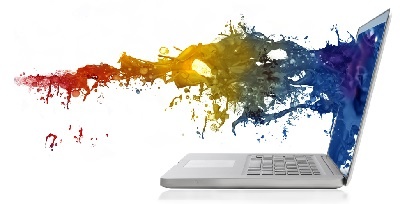Posted by Caveo Learning ● September 29, 2016
Looks Matter: Why Instructional Designers Can't Ignore Aesthetics
 As the old saying goes, it's what's inside that counts—in the case of learning deliverables, that's the content. But that's really only part of the story; looks matter a lot when it comes to instructional design and training development.
As the old saying goes, it's what's inside that counts—in the case of learning deliverables, that's the content. But that's really only part of the story; looks matter a lot when it comes to instructional design and training development. Aesthetics impact learning comprehension; strong visual elements help our brains work more efficiently. We see and process images faster than we understand words. Moreover, our brains process words differently than images. Words fall into short-term memory; images, on the other hand, go straight into long-term memory. This may explain why people tend to go to YouTube for a quick video that shows them how to do something, versus reading a manual. It also probably explains why infographics are so popular.
Visuals capture and hold a learner’s attention longer than text on its own. And when those images are relevant and connect to the text, they help learners retain the information.
Here are some tips to help instructional designers leverage aesthetics in learning deliverables for maximum learning retention.
Images Tell a Story
In learning design, it’s helpful to think of your content in a visual way. Think about how you would explain the content to someone if you couldn't use speech or text.
In a graphic, people see the whole first, and then they examine the parts. This reduces cognitive effort, allowing them to focus on the message.
When designing training that involves a process or steps, use images to quickly relay information. Of course, text can be used to explain and define the steps, but often that text is lengthy and could be daunting to read.
The same process and steps could be represented in a graphic using shapes, images, and simplified words, all for the benefit of the learner. Below is a comparison of the use of text or a graphic to explain a process; as you can see, the graphic allows the learner to grasp the concept quickly, while the images add a layer of interest.
 When creating graphics for a process, it’s important to think through how the steps can be represented visually. Should you use shapes or pictures to represent the steps? How can you simplify the wording or language to work with the shapes or pictures?
When creating graphics for a process, it’s important to think through how the steps can be represented visually. Should you use shapes or pictures to represent the steps? How can you simplify the wording or language to work with the shapes or pictures?
Another way to represent content visually is to use a model graphic. Models work best when you need to simplify something more conceptual—Caveo Learning's L&D Strategy Compass and the ATD Competency Model are examples of illustrating many elements coming together into a unified concept. Models can also be used as a reference marker in deliverables, helping connect the dots and even show progress for the learner.
Photographs are an excellent way to enhance training deliverables by providing visual appeal; photos of people add even more enhancement. Photos can tell stories and allow otherwise flat content come to life. Learners can quickly jump into information when photographs are involved. Another creative way to use photographs is to present opportunities for questioning, nudging them to ponder answers and ideas.
White Space is Your Friend
The space available on a slide or page is very valuable. Think of it like real estate.
 Just as you wouldn't cram every inch of a room with furniture, you don't want to fill every inch of the screen with text, images, or other elements. White space (the open areas in between the text, images, and other elements) is needed to allow a learner’s eyes to settle, or calm down. White space is also known as negative space, while the text, images, and other elements are considered positive space.
Just as you wouldn't cram every inch of a room with furniture, you don't want to fill every inch of the screen with text, images, or other elements. White space (the open areas in between the text, images, and other elements) is needed to allow a learner’s eyes to settle, or calm down. White space is also known as negative space, while the text, images, and other elements are considered positive space.
Use white space to your advantage. Design your slides and pages to use white space in a planned way, creating those resting areas for your learners to move about the area freely without getting “stuck” in a specific area. White space isn’t literal. In fact, white space is just the background area that shows in between the other elements.
In addition, consider the balance of the slide or page overall. How are all the elements on the slide working together? Think of balance as the weight of the elements on the slide or page. If you’re using photographs or graphics, consider how those elements work with the text on the slide and with the white space.
You can have a symmetrically balanced slide where elements on both sides are equally weighted. You can also work with an asymmetrically balanced slide where elements on one side are weighted more heavily (due to more or bigger elements residing on one side of the slide or page). When you look at the entire slide or page, does one side look or feel heavier than the other?
The intriguing benefit of asymmetrical balance is that even if there are more (or bigger) elements on one side of the slide, the overall weight of the slide can still be balanced. This can occur when the use of white space on one side is strong enough to balance the elements on the opposite side. The two working together provide balance.
Typeface, Color, and Visual Cues
It’s safe to say that all training deliverables contain type and color; using them effectively is the key.
 Type can offer some creative opportunities. Each font typeface, or family, offers myriad options. For example, within the Arial typeface are several versions, such as Arial Narrow, Arial Extra Bold, etc. (Note that the word font refers to the design or style of the letters within a typeface.) Typically, an organization will already have approved typefaces. But if you have the freedom to work outside of dictated branding guidelines, the main rule of thumb is to use one typeface or family. With the options available within that one type family, there really is little need to add others. Don’t mix typefaces—Arial with Courier and a little Century Gothic. It's an unnecessary distraction for the learner. When too many typefaces are used, the learner struggles to read what is on the slide or page. Keep it simple.
Type can offer some creative opportunities. Each font typeface, or family, offers myriad options. For example, within the Arial typeface are several versions, such as Arial Narrow, Arial Extra Bold, etc. (Note that the word font refers to the design or style of the letters within a typeface.) Typically, an organization will already have approved typefaces. But if you have the freedom to work outside of dictated branding guidelines, the main rule of thumb is to use one typeface or family. With the options available within that one type family, there really is little need to add others. Don’t mix typefaces—Arial with Courier and a little Century Gothic. It's an unnecessary distraction for the learner. When too many typefaces are used, the learner struggles to read what is on the slide or page. Keep it simple.
Color is powerful and can create interest for your learner. Just like with type, colors are typically dictated by the organization’s branding. But if you have the opportunity to choose colors, keep the number of those colors—your color palette—simple. And when you use those colors across a collection of deliverables, be consistent in their use. Think about how the deliverables would look with a simplified palette of black, white, and grey; that is sometimes enough to present the content well.
Visual cues are perceptual signals that guide the learner’s eye. They can be simple icons that direct the learner to nuggets of content or an engagement. They can also be simple graphical elements, like lines, arrows, or boxes that draw attention for the learner, directing their eyes to specific areas on the slide or page. If you use visual cues, create a set of them to use across all deliverables. Just like with your typefaces and color usage, keep this collection simple. Research how websites use icons, and pay attention to what shapes they are, where they are placed, and how they direct the user.
Be Consistent and Concise
Consistency is the regularity and frequency with which visual elements are used. How often are those elements used, and are they used in the same manner each time? Are the colors and typefaces the same? Is the placement the same? All of this helps set the stage for the learner to jump into content without stalling. They can sense familiarity and move ahead in their learning.
Just as you edit written content in deliverables, also edit the visual aspects. Remove content (written and visual) that is not needed. Edit with pristine simplicity in mind. Keep pieces that add value, and eliminate those that don’t. How much can you remove and still get the point across for your learner on that slide or page?
Use the “squint test” to edit deliverables—literally squint and look at the work on your monitor. This lets you view the page or slide holistically, seeing the text, icons, graphics, pictures, etc., as shapes and the space around those shapes. It helps you edit out parts that are heavy in order to bring the slide or page into balance.
The visuals in our training are not always given additional thought once they land on the slide or page. Visual elements have influence on the learning that takes place. Take time to leverage the use of the visuals, including graphics, photographs, space, type, color, and visual cues.
Topics: Instructional Design

